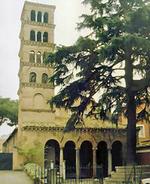Ten Percent and Falling: Dissident Priests
By Dr. Jeff Mirus ( bio - articles - email ) | Oct 19, 2011
I find the Irish and Austrian parallel interesting: Dissident groups of clergy in each country claim roughly 10% of priests as members.
In Ireland, the Association of Catholic Priests claims 540 members out of 4,700 priests, or about eleven percent. The Austrian Priests Initiative claims 400 members. Although I don’t have an exact figure for the number of priests in Austria, this appears to be about nine percent of the total.
It is certainly possible that these organizations inflate their membership numbers, but it is almost certainly true that there are quite a few more priests who are sympathetic to the dissidents to some degree, but not willing to climb so far out on the proverbial limb.
In any case, I find it gratifying that the numbers are so low. It is even more gratifying that organizations are being formed with the specific intention of identifying their members as hostile to the Magisterium of the Church and the disciplinary policies of their bishops.
It was not so long ago that such priests dominated the organizations and associations which claimed to represent the Church as a whole, though this may still be true in some cases. In fact, it was not so long ago that one could realistically wonder whether the majority of the members of some episcopal conferences really supported the Magisterium of the Church. Trust me on this: When dissenters start operating through self-proclaimed dissident groups, rather than claiming to speak for the whole, things are getting much, much better. At the very least, you can tell the players without a score card; you need not be led astray unless you are paying absolutely no attention at all.
There are, of course, a thousand variations on the dissident theme. But it is the long generation of persons who are now between the ages of about 45 and 90 which contains the vast majority of dissenting priests. Below age 40, you find relatively few, and a great many of the older ones have passed from positions of influence. As a general rule, those within the Church who intensely dislike the Church are not able to replicate themselves in the next generation. It is one thing to misuse an ecclesiastical career when one wakes up to find one has been coopted by the surrounding secular culture; it is another thing to embrace such a career when one knows before going in that one is wedded to the values of the surrounding culture.
We should demand, I think, that these groups publish an age-profile of their membership.
But just because the trends are improving does not mean there is no problem. The very fact that bishops have not moved decisively against these groups suggests that their numbers are not yet negligible. It also suggests that the bishops themselves are not yet as solid and as strong as they need to become. The bottom line is that it is a clear and continuing violation of the rights of the faithful to assign priests who dissent from the teachings of the Church to be their teachers and pastors.
Still, 10% is very different from, say, 40%. And you can take it to the bank that the number of dissidents is falling steadily. In the dissolute West, where vocations have declined rapidly, the newer priests know what they are up against and are far more solid. Moreover, their ranks are being swelled by missionaries from countries where the Faith is significantly less vitiated by materialism and secularism. Indeed, the younger men who are coming into power now are largely John Paul II priests. They are far more aware of what authentic reform means. They do not believe that “renewal” and “secularization” are synonyms.
Sadly, the academic world and dissident religious orders will be the slowest to change. University faculties have great powers of self-perpetuation. Dissident religious orders have none, but would apparently rather die than reform. Their death is agonizingly slow.
But the Church as a whole is changing. It is a Church ever more conscious of a Catholic identity which demands that it be counter-cultural. The restoration of Friday abstinence in England and Wales may seem a small thing, but it is a dramatically symbolic case in point. The new men may or may not set the whole world on fire, but they will do much to end entrenched dissent simply by replacing the old men. True, the institutional Church is always weakened by the fact that her members are sinners, as we learn each and every day in the news. But in another twenty years, the endemic internal dissidence of the twentieth century will be history.
All comments are moderated. To lighten our editing burden, only current donors are allowed to Sound Off. If you are a current donor, log in to see the comment form; otherwise please support our work, and Sound Off!
-
Posted by: AgnesDay -
Oct. 24, 2011 4:38 PM ET USA
If it's only 10% of the clergy, what possible excuse do bishops have for not disciplining those who need it?
-
Posted by: schndj2254 -
Oct. 21, 2011 7:48 PM ET USA
For those of us still suffering with bishops who yearn "in their blogs" for the collegiality and brotherly diffidence to each other of the Bernardin era...this is wonderful news but our deliverance is still a few years away...with episcopal retirement at age 75ish. Praise God and let's start encouraging the courageous and orthodox leadership....it can't happen too soon! We can almost see the end of the wilderness up ahead.








